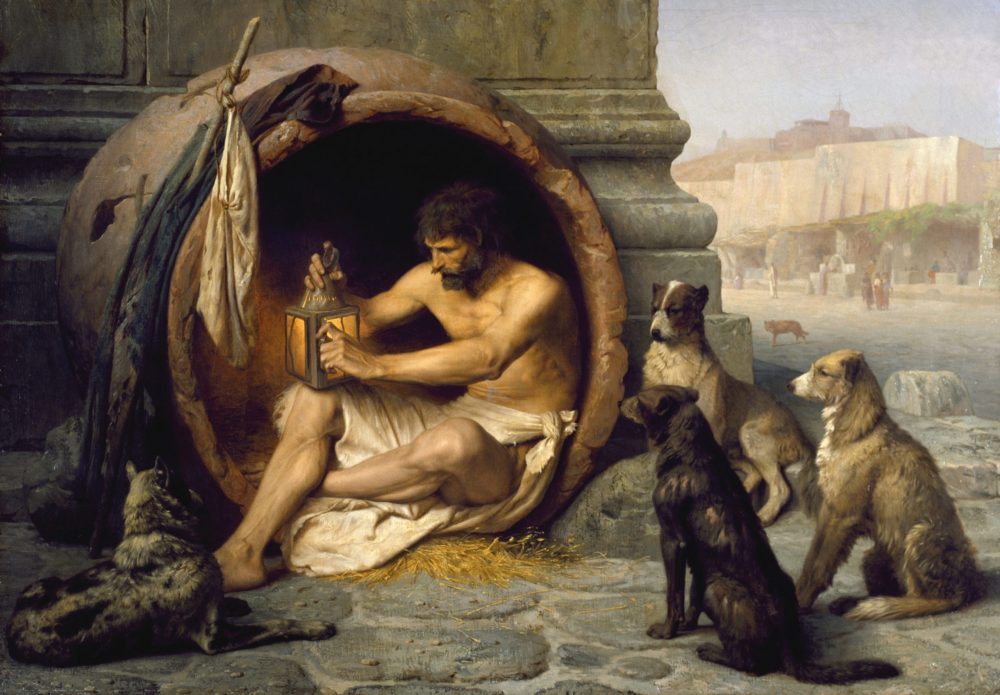Gérôme
Stories behind Works of Art
We could make this publication thanks to small donations. How is 3 minutos de arte supported?
Diogenes (1860). Jean-Léon Gérôme
This work is one of the most famous representations of one of the most admirable and loved philosophers: Diogenes (412/323 B.C.), the main representative of the School of Cynic Philosophy.
The word “cynic” usually means: “one who believes that human conduct is motivated wholly by self-interest”.
The meaning in Philosophy is a curious one. The term “cynic” derives from Ancient Greek kynikos and means “dog-like”. The cynical philosophers were the ones that chose to live as dogs. They considered that happiness could only be achieved through a simple life and in harmony with nature.
That is why Diogenes lived in a wine barrel, “freed” from any richness or material concern. Men are more free and happier when they have less needs, when they desire fewer things.
This school of thought was created by Antisthenes who was a disciple of Socrates who, once walking around the market said: “How many things I don’t need!”
Gérôme, prestigious painter and sculptor of academic art, represented Diogenes in his keg surrounded by street dogs. But he added a detail, a lighted lamp in the middle of the day. It is the lighted lamp with which he walked the streets of Athens during the day saying that he was searching for an honest man.
Going back to the sense the term “cynical” is given today, that distortion was in part due to the fact that the critical philosophers were considered “shameless,” but mostly taking into account positive attitudes as when they expressed a truth. Then the concept changed into having dishonest attitudes or saying a big lie. Lack of shyness is a characteristic in numerous anecdotes told about Diogenes, in general as provocative as his sharp humor. The most famous exemplifies his way of being cynical, when he met with Alexander Magno in Corinto. Magno was one of the most powerful people in the world and one of the greatest conquerors in history. He approached the shabby Diogenes, famous for his wisdom, way of life and provocations in order to meet him. He asked if he needed anything, that he would give it to him whatever it was.
Not an ideal question to ask to an authentic cynic. And Diogenes answered: “that he wanted him to get out of the sunlight.”
Alexander remark to his companions was also famous, that if were not Alexander, he would choose to be Diogenes.
Recommended links:
Stories behind the Works of Art: Monet and the Rouen Cathedral.
Stories Behind Works of Art: Guernica.
Stories Behind Works of Art: The Birth of Venus, Botticelli.
Stories Behind Works of Art: The Arnolfini Portrait, Jan van Eyck.
You can also find more material using the search engine.




0 Comments